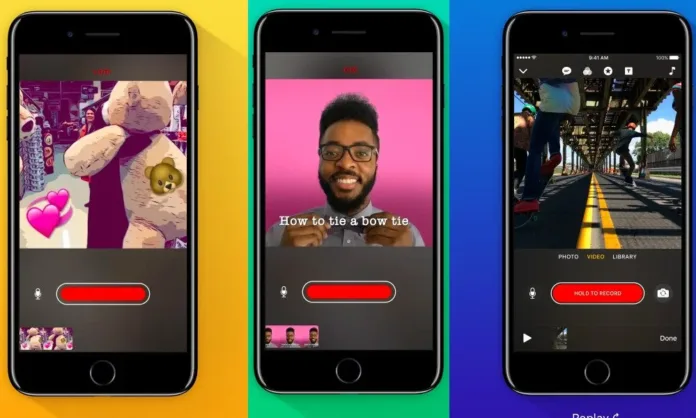Table of Contents
Apple has officially ended support for its Clips app, marking the end of one of its lesser-known creative tools. As of October 10, the Apple Clips app has been removed from the App Store, and the company confirmed that it will no longer be making updates or improvements. The decision surprised some long-time users, but many in the Apple community saw it as inevitable.
According to Apple’s official support page, Clips is no longer available for new users to download, although those who previously installed it can still use it on current and earlier versions of iOS and iPadOS. Existing users can also re-download the app from their purchase history if necessary.
Apple Clips App Officially Retired After Seven Years
Apple stated that users should save their Clips videos to the Photos app, as the lack of updates will eventually affect usability. The company advised users to transfer their content, including videos with added filters, emojis, and music, to ensure access and compatibility across future devices.
At Squaredtech, we view this move as part of Apple’s broader shift in focus. The company has been increasingly prioritizing integrated media tools within its ecosystem rather than maintaining stand-alone apps. By ending the Apple Clips app, Apple signals that it no longer sees the need for a separate video editing experience that sits outside the Photos or iMovie frameworks.
The Rise and Fall of the Apple Clips App
The Apple Clips app launched in 2017 with high expectations. Many saw it as Apple’s strategic response to popular social media trends led by Snapchat and Instagram Stories. Although Clips was never meant to be a social network, it offered users an easy way to combine short video clips, add filters and captions, and share fun, quick edits. The app reflected Apple’s effort to capture the fast-growing mobile video creation market without diving into social media itself.
In its early days, Clips was praised for its simplicity and seamless integration with iPhones and iPads. Users could easily capture, trim, and merge video segments, add background music, and apply animated text overlays. It was ideal for quick video projects that didn’t require professional tools like Final Cut Pro or complex editing knowledge.
However, the simplicity that made it approachable also became its biggest limitation. TechCrunch reporter Brian Heater described Apple Clips as “simple to a fault.” He argued that while it served as a useful demonstration of Apple’s software and hardware capabilities, it lacked the depth needed to compete with specialized video platforms or social media apps.
Our editorial team analyzed that early on, Apple positioned Clips as a bridge between its creative ecosystem and user-friendly video tools. It was a showcase of Apple’s software polish—smooth animations, real-time editing, and effortless sharing all powered by the hardware capabilities of iPhones and iPads. But as user expectations evolved, the app struggled to keep up.
Why Apple is Pulling the Plug on the Clips App
Apple’s decision to retire the Clips app seems to stem from declining usage and limited updates in recent years. Reports from MacRumors noted that while Apple occasionally added new features after its launch, updates had become rare, mostly limited to performance fixes.

In online communities like Reddit, Apple fans reacted to the shutdown with indifference. Many admitted they had not used the app in years or never knew it existed at all. This lack of engagement highlights how quickly creative trends have shifted. Video content creation today leans heavily on platforms like TikTok, Instagram Reels, and YouTube Shorts spaces that encourage instant sharing, AI-driven editing, and viral discovery.
Meanwhile, Apple Clips remained an isolated experience. It relied entirely on users saving and sharing videos manually, offering no built-in distribution or engagement features. That isolation made it difficult for the Apple Clips app to survive in a content landscape dominated by algorithm-driven exposure.
The rise of AI-based video tools has also contributed to the app’s decline. Apps like OpenAI’s Sora, which recently reached over one million downloads, now generate entire video sequences from text prompts, reshaping how users create and consume media. Compared to these emerging technologies, Clips feels outdated a static tool in an era of intelligent automation.
From an analytical standpoint, We see Apple’s move as part of a pattern. The company has been gradually streamlining its ecosystem, removing underperforming apps while integrating key features into its main software platforms. Instead of supporting standalone creative tools, Apple now favors built-in features that extend across its devices. For example, the Photos app now offers expanded video editing, filters, and auto-enhancement tools, while iMovie remains a more robust option for users who need multi-track editing.
By discontinuing the Apple Clips app, Apple is simplifying its product strategy and redirecting focus to apps that deliver greater value across macOS, iOS, and iPadOS.
What This Means for Current Users and the Future of Apple Creativity Tools
For existing users, the Apple Clips app will continue to function on supported devices, but Apple’s warning is clear: without updates, its performance will degrade over time. As new versions of iOS and iPadOS roll out, compatibility issues are likely. Some features, especially those involving augmented reality filters and live titles, may stop working altogether.
Apple has recommended that users export their Clips videos to their photo library. This step ensures that memories, creative projects, and video experiments are preserved before the app becomes obsolete. Users can still edit and enhance these videos using apps like iMovie, Final Cut Pro for iPad, or third-party video editors.
We believe Apple’s decision reflects a growing emphasis on unifying its creative ecosystem. Rather than maintaining fragmented apps, Apple is strengthening the capabilities of its core media tools. This streamlining helps users transition smoothly between devices and projects while ensuring that Apple’s technology remains efficient and cohesive.
Looking ahead, Apple’s innovation strategy appears to be shifting toward AI-assisted creativity. Recent reports suggest the company is investing heavily in on-device AI models that can generate and edit media intelligently. These tools could replace simple video editors like Clips with smarter, more intuitive solutions that automatically enhance footage, add sound, and adapt to user preferences.
If Apple integrates such features directly into the Photos app or iMovie, it could create a unified environment where users can record, edit, and share videos seamlessly without switching apps. This direction aligns with Apple’s long-standing focus on simplicity, privacy, and user experience.
While some users may miss the playful, lightweight nature of Clips, Apple’s shift suggests a focus on more capable and intelligent media tools that can keep pace with technological trends. The Apple Clips app served its purpose as a fun, entry-level editing tool, but its time has passed.
Squaredtech’s Take on the End of Apple Clips
From a broader perspective, the end of the Apple Clips app symbolizes how fast creative technology evolves. In 2017, Clips represented Apple’s effort to help users create expressive short videos without needing complex software. But in 2025, creativity is driven by AI, automation, and integrated ecosystems.
We see this as a reminder that innovation in technology doesn’t always mean adding more, it can also mean removing tools that no longer fit the vision. Apple’s decision to discontinue Clips reflects a clear message: creativity on Apple devices will be smarter, faster, and more connected moving forward.
For users, this marks an opportunity to explore modern alternatives and experiment with new creative workflows. Whether through Apple’s Photos enhancements, Final Cut Pro for iPad, or AI-driven editing tools, the creative possibilities remain vast.
Apple’s farewell to Clips is not just the end of an app, it’s the transition into a new chapter of intelligent content creation. As Squaredtech continues to analyze these shifts, one thing remains certain: Apple’s innovation strategy is always aimed at simplifying the user experience while pushing creativity into the future.
Stay Updated: Mobile


